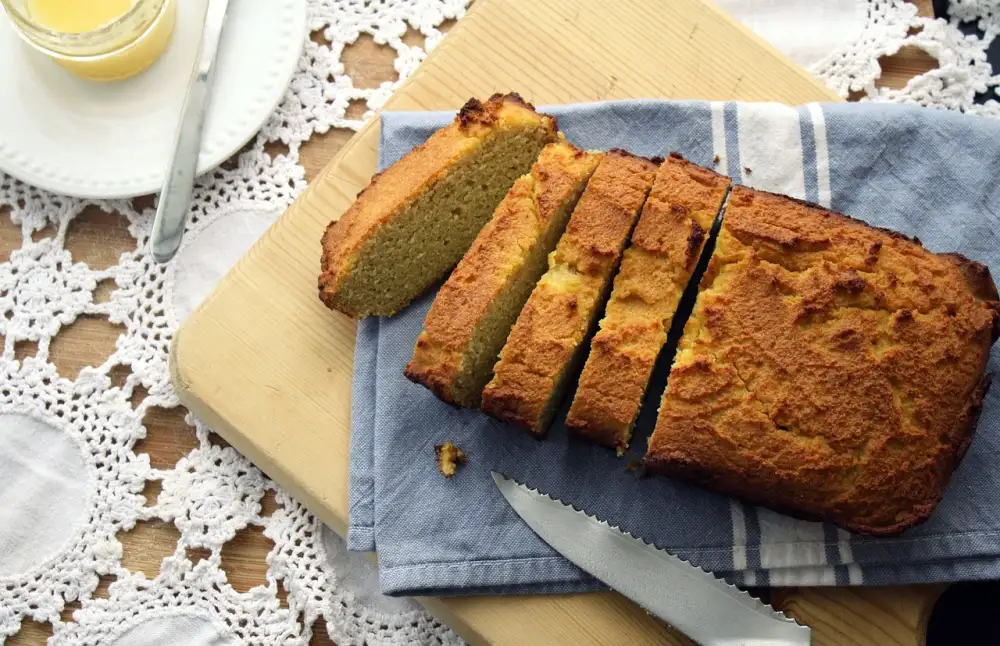Discover the Benefits of Gluten-Free Flour for a Healthier Lifestyle

In recent years, the popularity of gluten-free diets has skyrocketed, and with it, the demand for gluten-free alternatives in cooking and baking. One such alternative is gluten-free flour, which has become a staple ingredient for those seeking a healthier lifestyle. But what exactly is gluten-free flour? Simply put, it is a type of flour that does not contain gluten, a protein found in wheat, barley, and rye. This makes it an excellent option for individuals with gluten sensitivities or celiac disease. In this article, we will explore the benefits of gluten-free flour and how it can be incorporated into a healthy diet. So let's dive in and discover the wonders of this versatile ingredient!
Understanding Gluten and its Effects on Health
Gluten is a protein found in wheat, barley, and rye. For individuals with celiac disease or gluten sensitivity, consuming gluten can lead to a range of health issues. When gluten is ingested by those with celiac disease, it triggers an immune response that damages the lining of the small intestine. This can result in nutrient deficiencies, digestive problems, fatigue, and even long-term complications.
Even for those without celiac disease, gluten sensitivity can cause similar symptoms such as bloating, abdominal pain, and brain fog. It's important to note that not everyone needs to avoid gluten; however, understanding the effects it can have on health is crucial for those who are sensitive or intolerant.
By opting for gluten-free flour alternatives, individuals can eliminate the negative effects of gluten on their bodies. This opens up a world of possibilities for creating delicious and healthy meals without compromising taste or texture.
Benefits of Gluten-Free Flour for Individuals with Gluten Sensitivity
Individuals with gluten sensitivity often experience a range of symptoms, including digestive issues, fatigue, and skin problems. By switching to gluten-free flour, these individuals can enjoy a wide variety of benefits. Firstly, it allows them to continue enjoying their favorite baked goods without the negative effects of gluten. Gluten-free flour also promotes better digestion and nutrient absorption, as it is easier for the body to break down. Additionally, it can help reduce inflammation in the body, leading to improved overall health. By opting for gluten-free flour, individuals with gluten sensitivity can maintain a healthier lifestyle while still indulging in delicious food options.
Exploring Different Types of Gluten-Free Flours
When it comes to gluten-free flours, there are plenty of options to choose from. Each type of flour has its own unique taste and texture, making it suitable for different types of recipes. Some popular gluten-free flours include almond flour, coconut flour, rice flour, and chickpea flour.
Almond flour is made from finely ground almonds and is known for its slightly sweet and nutty flavor. It works well in baked goods like cookies and cakes, giving them a moist and tender texture.
Coconut flour is made from dried coconut meat and has a subtly sweet taste. It absorbs moisture well, making it ideal for recipes that require a denser texture such as pancakes or bread.
Rice flour is made from ground rice grains and has a neutral flavor. It can be used as a substitute for all-purpose flour in many recipes, including breads, pastries, and noodles.
Chickpea flour, also known as gram flour or besan, is made from ground chickpeas. It has a slightly nutty flavor and works well in savory dishes like fritters or flatbreads.
These are just a few examples of the wide variety of gluten-free flours available on the market today. Experimenting with different types of flours can add new flavors and textures to your favorite recipes while still maintaining a gluten-free lifestyle.
Tips for Baking with Gluten-Free Flour
1. Use a blend: Experiment with different gluten-free flour blends to achieve the best results. Combining different flours like rice, almond, and tapioca can help mimic the texture and taste of traditional wheat flour.
2. Add binders: Gluten-free flours lack the binding properties of gluten. To prevent your baked goods from crumbling, add binders like xanthan gum or guar gum to your recipes. These ingredients help create a better structure in gluten-free baked goods.
3. Increase moisture: Gluten-free flours tend to absorb more moisture than regular flour. Adjust your recipe by adding extra liquid such as milk or yogurt to keep your baked goods moist and tender.
4. Don't overmix: Unlike wheat-based doughs, gluten-free batters should not be overmixed as it can lead to a denser texture. Mix until just combined to avoid developing excess gluten-like structures.
5. Let it rest: Allow your gluten-free batter or dough to rest for some time before baking. This resting period allows the flours to hydrate fully and results in a better texture and flavor in the final product.
6. Experiment with ratios: Finding the right ratio of gluten-free flour to other ingredients may require some trial and error. Start with a 1:1 substitution ratio and adjust as needed based on the desired texture and taste.
7. Add flavor enhancers: Gluten-free flours can have a slightly different taste compared to wheat flour. Enhance the flavor by adding spices, extracts, or citrus zest to your recipes.
By following these tips, you can achieve delicious and successful baking results using gluten-free flour while enjoying all its health benefits
Incorporating Gluten-Free Flour into a Healthy Diet
Switching to a gluten-free diet doesn't mean sacrificing taste or variety. In fact, incorporating gluten-free flour into your meals can actually enhance the nutritional value of your diet. Gluten-free flours are often made from nutrient-rich ingredients like almond, coconut, and quinoa, which are packed with vitamins, minerals, and fiber.
To start incorporating gluten-free flour into your diet, try replacing traditional wheat flour with gluten-free alternatives in your favorite recipes. You can use almond flour for baking cookies and cakes or coconut flour for pancakes and bread. These flours not only provide a unique flavor but also offer health benefits such as improved digestion and increased energy levels.
Additionally, you can experiment with blending different types of gluten-free flours to create your own custom mixtures. This allows you to tailor the texture and taste of your dishes to suit your preferences. For example, combining rice flour with tapioca flour can result in a lighter texture in baked goods.
Remember to adjust the liquid content when using gluten-free flours as they tend to absorb more moisture than regular wheat flour. Adding extra liquids like milk or water will help maintain the desired consistency of your batter or dough.
Incorporating gluten-free flour into your healthy diet is not limited to baking alone. You can also use it as a thickening agent in soups and sauces or as a coating for meats and vegetables before frying or baking. The versatility of gluten-free flour opens up endless possibilities for creating delicious and nutritious meals.
By embracing the versatility and health benefits of gluten-free flour, you can enjoy a wide range of flavorful dishes while maintaining a healthier lifestyle. So go ahead, experiment with different types of gluten-free flours and discover new ways to incorporate them into your daily meals for a truly satisfying culinary experience.
In conclusion, embracing the versatility and health benefits of gluten-free flour can greatly enhance our overall well-being. By eliminating gluten from our diet, we can alleviate symptoms associated with gluten sensitivity and improve digestion. Additionally, using gluten-free flour opens up a world of possibilities in the kitchen, allowing us to create delicious and nutritious meals for ourselves and our loved ones. So why not give it a try? Incorporate gluten-free flour into your cooking and baking routines and experience the positive impact it can have on your lifestyle. Start your journey towards a healthier you today!
Published: 20. 12. 2023
Category: Health



